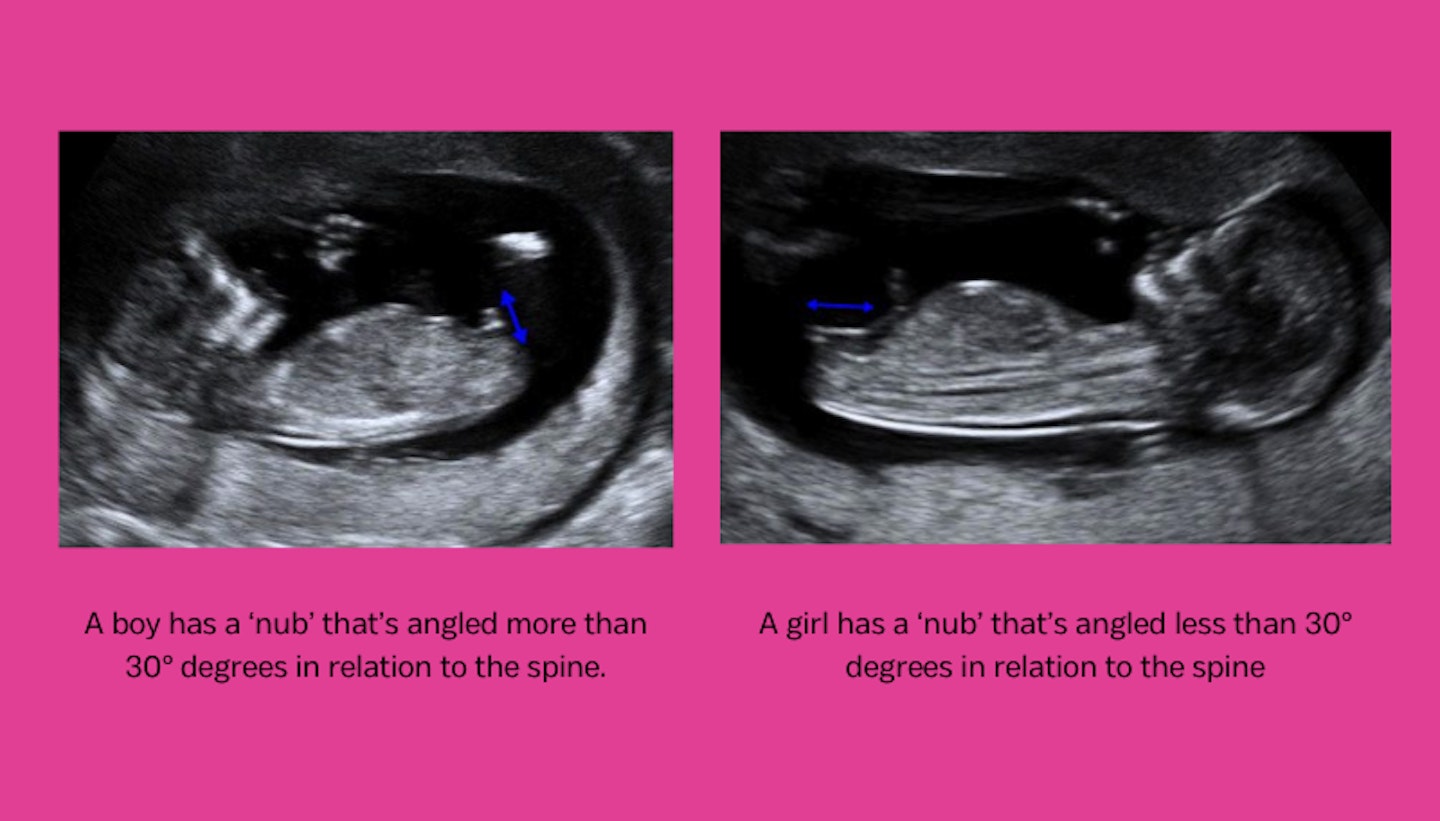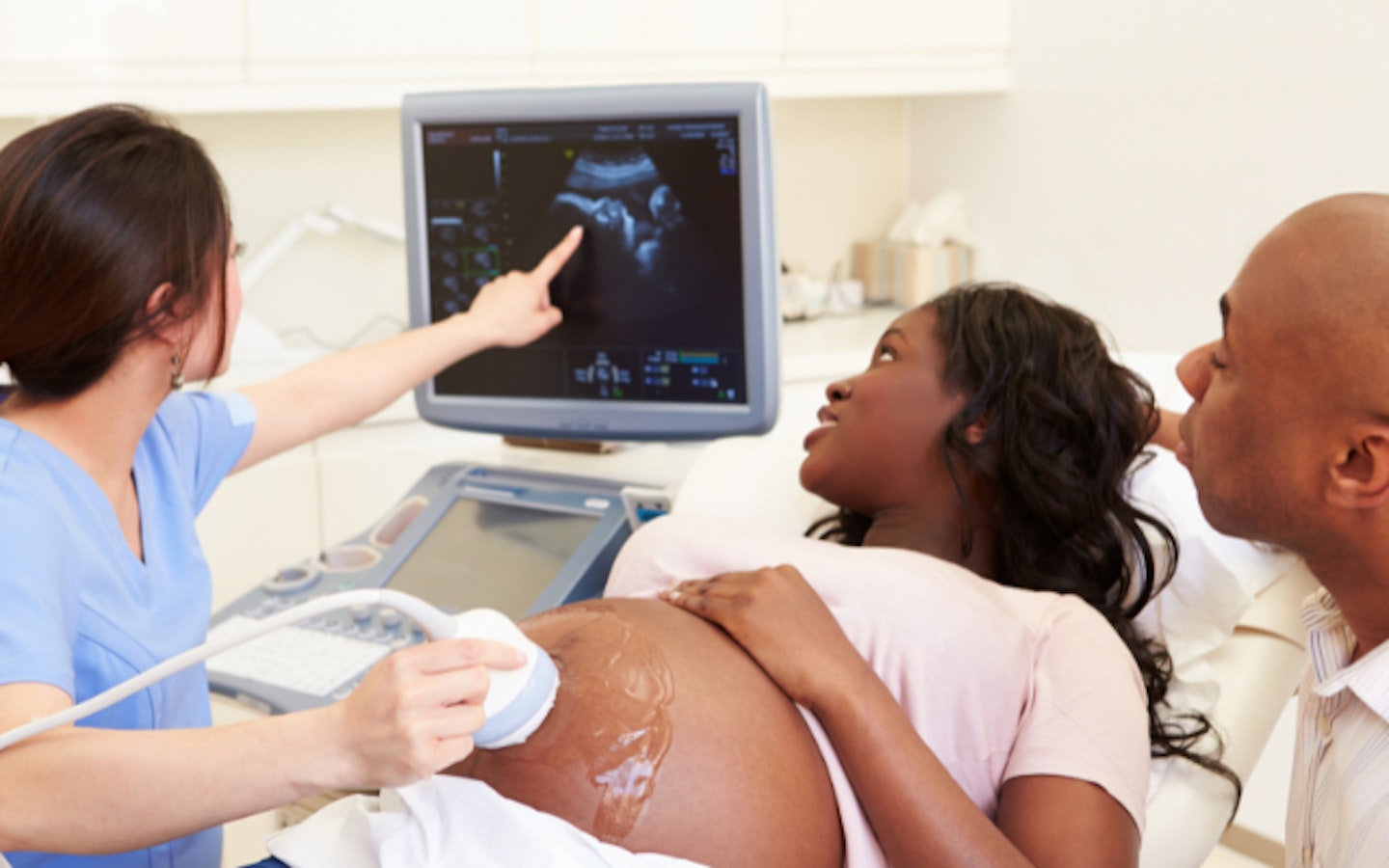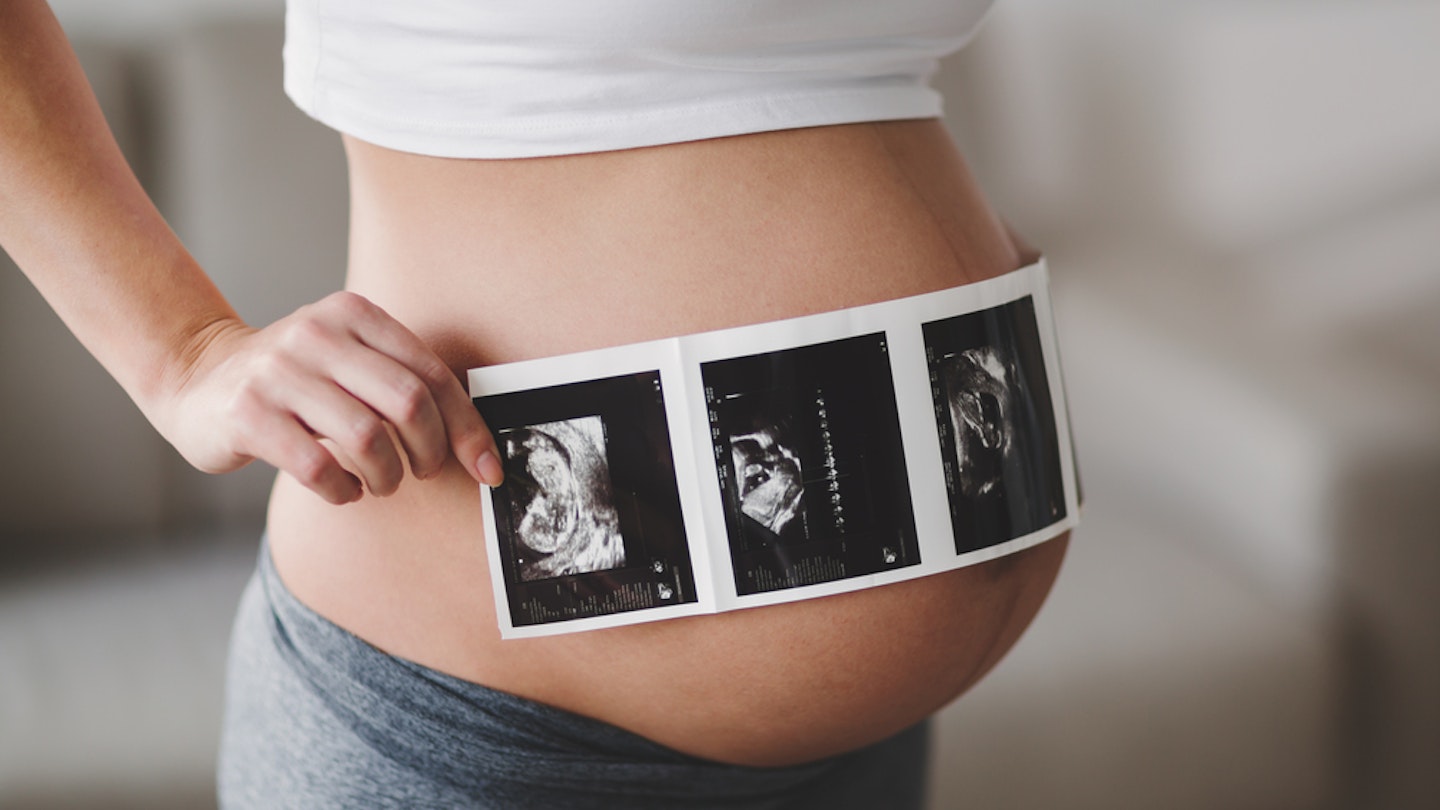There’s so many theories you will come across that claim they can help you determine the sex of your baby. We've all heard the old wives tales which claim you're having a girl if you're carrying a high bump or the myth that you're having a boy if there's no morning sickness. Pah!
Another one you may've heard is the nub theory. But what exactly is nub theory and is it really accurate? We're debunking it right here...
What is the nub theory?
The nub theory is all to do with all that age-old guessing game of whether you're having a boy or girl. It is a concept that explores how a fetus's reproductive organs develop and not based around science.
Rachel Fitz-Desorgher, a midwife with 30 years of experience in infant feeding, active births and working with parents explains: “Sometimes referred to as looking at the ‘angle of the dangle’, some people claim that when you look at an early scan of the baby’s genital area, although both girls and boys have identical-looking little bobbles (or ‘nubs’), the male ‘nub’ sticks up at a different angle from the female ‘nub’. ” So in its simplest form, the angle of the ‘nub’ in relation to the spine is supposed to tell us if it’s a boy or girl.

How does the nub theory work?
The way the nub theory works is really simple really. You can use your 12-week scan (which determines your due date) as a tool for predicting the sex of your baby. From around 12 weeks to 14 weeks you'll be able to clearly see your baby's nub, (hence the name) also called the genital tubercle. Both males and females have this nub, which will become the penis if it is a boy, or the clitoris if it is a girl.
By comparing the angle of this nub in relation to the spine, you can predict your baby's sex. For example, if the nub is angled at 30 degrees or more it is likely a boy, if it is under 30 degrees it is likely a girl. As you can imagine, predicting the angle of the dangle is tricky to get completely right, even for experts, which is why you're not normally told baby's gender until 20 weeks of pregnancy.
While the 12-week scan provides a lot of information, it doesn't tell the whole story explains Rachel: “When you look at a 12-week scan, you can see many things if you are trained to do so,” she says. “But even the very best sonographer will not claim to be able to tell you the sex of your baby with any certainty. The most accurate time to determine the sex of your baby is when your little warm bundle has safely reached your arms!”
She also notes that scanning is first and foremost for safety purposes only. “Scanning is a medical procedure done to confirm pregnancy and exclude abnormalities and the NICE guidelines support the NHS providing them for this reason,” she says.
“Many parents go into the room treating the scan as a nicety and want more info than the sonographer can actually give. Sonographers are put under a lot of pressure to look for gender when the sonographer is actually supposed to be concentrating on checking that the baby has all its arms and legs!”
How accurate is the nub theory?

A 2015 study suggested there is some truth to this method, particularly in predictions made after 14 weeks gestation. The study tells us that there was an overall success rate in the first trimester group (11–14 weeks) of 75%, although it is worth noting that there were some scans where a prediction could not be made. Results were less accurate for fetuses younger than 12 weeks, with an overall success rate of only 54%.
However, Rachel advises caution when it comes to relying on this method for determining gender. “Using the nub theory may be no better than swinging a coin over your tummy, looking at the shape of your bump, analysing your cravings or counting how many times you need to shave your legs in a month.
“As the mum of four boys, my friends tested every one of their favourite gender-prediction theories on me and I can say categorically that - just like the scientific evidence tells us - none of them worked any better than 50:50. So toss a coin or just guess - it will work just as well!”
If you are given a gender prediction at your scan, be aware that results vary depending on sonographer experience, fetal age and fetal gender. At 13 weeks gestation and above you may be able to get an opinion from your sonographer, but don't take it as gospel. Even the position that baby is lying in can effect the accuracy of predictions.
Predictions prior to 12 weeks are discouraged, and some sonography departments will refuse to give you a prediction under a certain gestational age.
Should I try the nub theory?
You may be excited to glean any information about your upcoming arrival, so you could be tempted to try nub theory for yourself. While it can be a bit of harmless fun to attempt, we recommend not taking the nub theory too seriously, though the accuracy rate sounds pretty good on paper, even the experts can get it wrong.
What other gender theories exist?
If you fancy having a go at some other theories which aim to reveal your baby's gender, take a look at the skull theoryand our Chinese Gender Predictor Tool. Or what about these 26 pregnancy old wives' tales that hint at your baby’s gender?
But don't rely on these theories to pick your nursery colours. If you're after an accurate prediction it's better to wait until your 20 week anomoly scan and a medical professional has confirmed your baby’s sex.
Bryony Firth-Bernard graduated from the University of Gloucestershire with a first in Journalism and went on to work as a reporter at Heart Radio West before becoming the lifestyle intern across Good Housekeeping, Prima and Red magazine.
